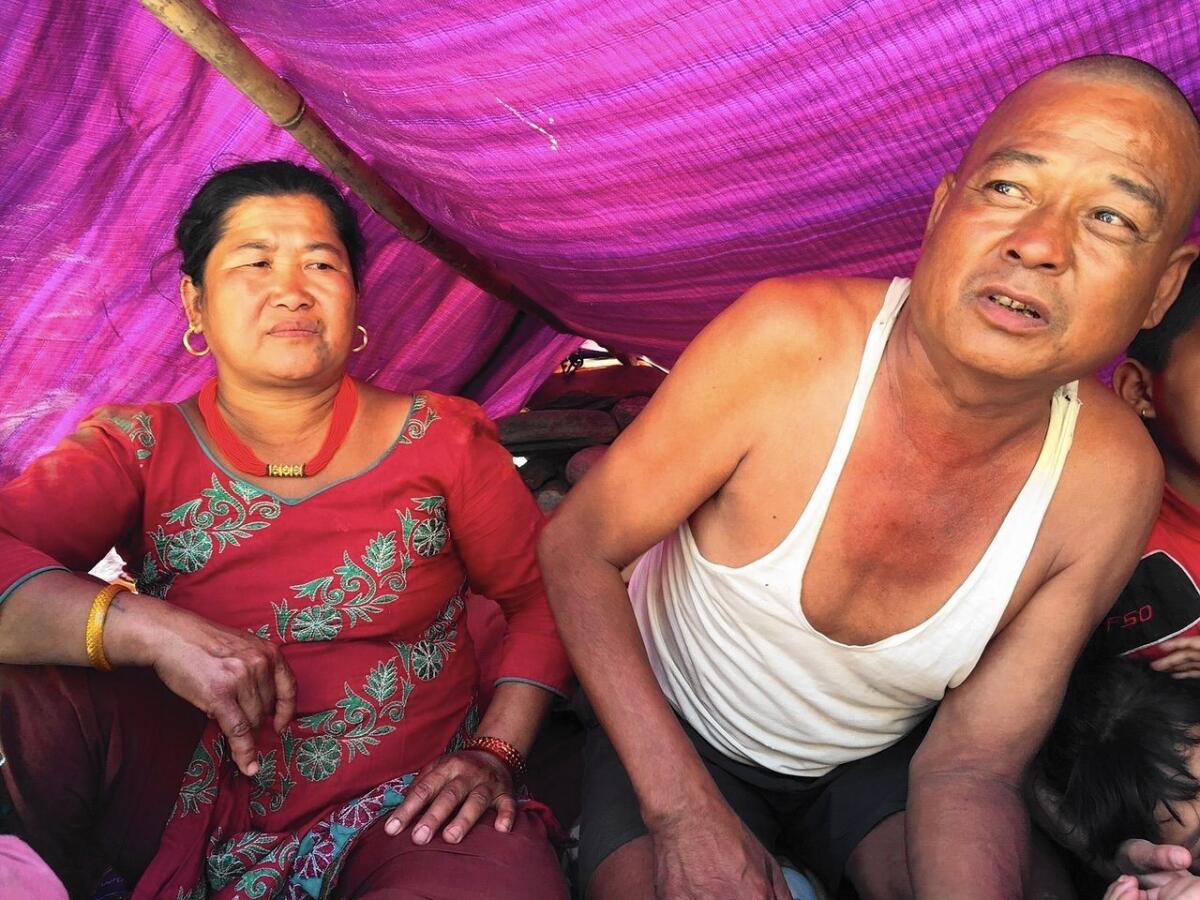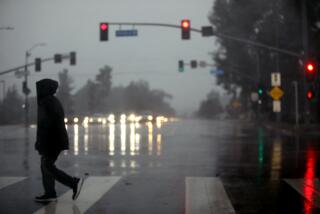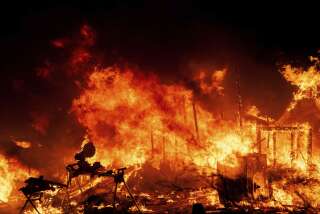Nepal quake victims fear government won’t help much, if history is guide

In August, after heavy monsoon rains triggered a landslide that obliterated this village and killed 156 people, Nepalese authorities promised to resettle the survivors and provide them financial aid from a new relief fund.
Those promises had yet to be fulfilled when the April 25 earthquake struck Nepal, creating fresh horror for the families of Jure, many of whom lost their temporary homes in the magnitude 7.8 temblor.
The shortfalls in compensation for the earlier calamity are one reason that villagers are not counting on swift assistance from their government this time, and the problem has added to a widespread lack of confidence in Nepal’s quake recovery plans.
“It’s the same government as last year, so I have very little hope that things will be different,” said Mangale Tamang, 56, a former Jure resident who was sleeping Sunday morning in a lean-to by the side of a dust-choked highway where his village once stood.
After being criticized for a slow initial response to the temblor, the government has swung into action, deploying soldiers to clear roads and dig out people trapped under the rubble, and announcing multimillion-dollar funds for relief and rehabilitation.
But in the recent past, the government has struggled to compensate victims of natural disasters far smaller than the temblor that has left more than 7,250 dead and damaged or destroyed hundreds of thousands of homes.
Part of the problem, experts say, is a peculiar system of government sprung from a failure to hold local elections in nearly 20 years. All decisions must go through a few top officials in the capital, Katmandu, and committees that manage local affairs are appointed by national political parties, which the Nepalese say makes them less accountable to the people.
The system has fueled corruption and mismanagement, according to Nepal’s own watchdogs. The country’s auditor general reported in March that government agencies had spent just one-fifth of their budget because of “political influence while selecting projects, lack of regular follow-up of project implementation, poor participation of users and collusion between contractors and government officials.”
Much more money is about to become available. Last week Prime Minister Sushil Koirala created a fund for quake victims that had raised about $1.5 million as of Friday, Koirala’s office said.
The government also aims to collect $2 billion for a national reconstruction fund to rebuild shattered infrastructure.
Some cash has reportedly begun to be distributed. Families of those killed in the temblor have received $100 to $400 in death benefits in six municipalities east of Katmandu, the Kantipur newspaper reported Sunday.
The biggest earthquake here in more than eight decades occurred “during a time when the Nepali state is at its least capable,” said George Varughese, Nepal representative for the Asia Foundation, a nonprofit group.
“The people’s skepticism is not just based on the first few days’ performance,” Varughese said. “It’s based on a track record of incapability and underperformance.”
After an avalanche in April 2014 killed 16 Sherpa climbers on Mt. Everest — at the time the deadliest incident recorded on the world’s tallest peak — it took authorities eight months to pay each victim’s family a promised $500 death benefit.
Officials cited bureaucratic delays, but critics said the payout was paltry, especially considering the government charged foreign climbers that year $11,000 for a permit to scale the mountain.
After the Jure disaster, officials paid $1,000 to families that lost their homes and $400 to those that lost a relative. But villagers say they have not seen any money from a $220,000 Jure Landslide Relief Fund created to help families get back on their feet.
A report last month in the Nepal News website said the funds, raised mainly through private donations, were sitting in a government account because the Home Affairs Ministry had not given permission for them to be disbursed.
In an interview, the district chief, Krishna Prasad Gyawali, said officials were in the process of finding a site to resettle the families. That was supposed to take place before the monsoon season, which typically begins in June.
“Just then, the earthquake happened, so the emergency has taken priority,” he said.
Once a quiet fishing village at the edge of a river, Jure disappeared under the landslide, which blocked part of the river and created a massive dam. The remainder of the homes were submerged, with only the tops of a few houses visible above the water. All but a handful of families have moved in with relatives in nearby towns or migrated to the ever-growing capital.
Lanka Lama’s extended family suffered damage to five homes in the landslide and asked village authorities for money to rebuild one or two of them. The village council refused. Lama, a 21-year-old truck driver, built a temporary house a mile away with his older brother, using tin sheets salvaged from their former home, but that too was destroyed in the quake.
“It’s too much to deal with,” said Lama, who had come back to a tent on the roadside near where Jure once stood.
A few miles up the winding highway in Chautara, the devastated seat of Sindhupalchowk district, residents said they had not seen any assistance from the local government in the eight days since the quake. More than 2,000 people have died in the district east of the capital, the highest death toll in the country, but residents said they had not heard from Gyawali, the top local official.
Residents took the initial relief effort into their own hands, organizing tents and meals with the help of a local charity. The first soldiers and foreign aid agencies began arriving three days ago, residents said.
“Of course the foreigners are helping and aid is coming into the country, but they’re not the ones handing it out to the people,” shopkeeper Sher Bahadur Thapa said. “They give it to the district and the ward officials, and that’s where it goes missing. It’s the needy people who suffer.”
More to Read
Start your day right
Sign up for Essential California for news, features and recommendations from the L.A. Times and beyond in your inbox six days a week.
You may occasionally receive promotional content from the Los Angeles Times.







